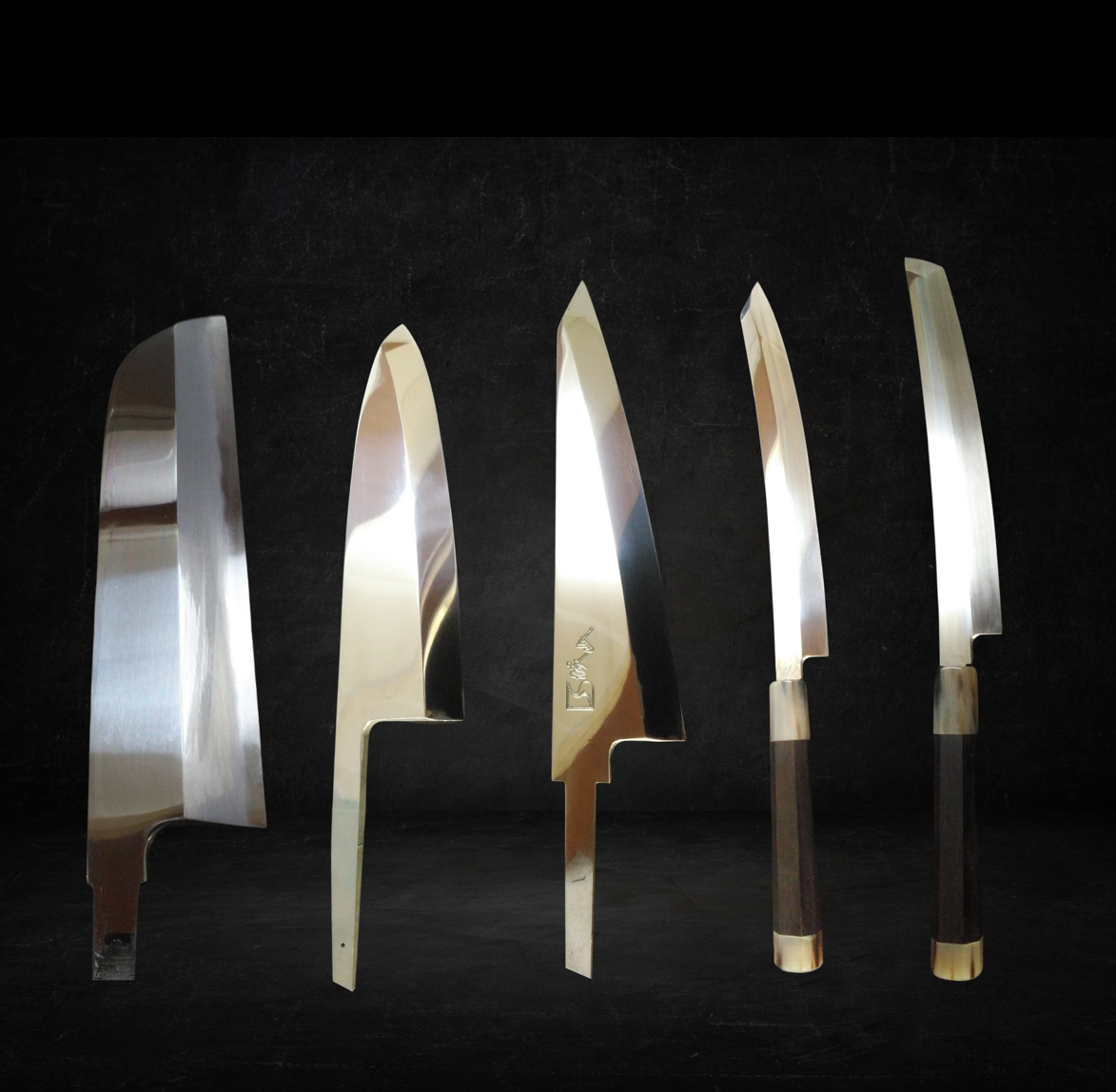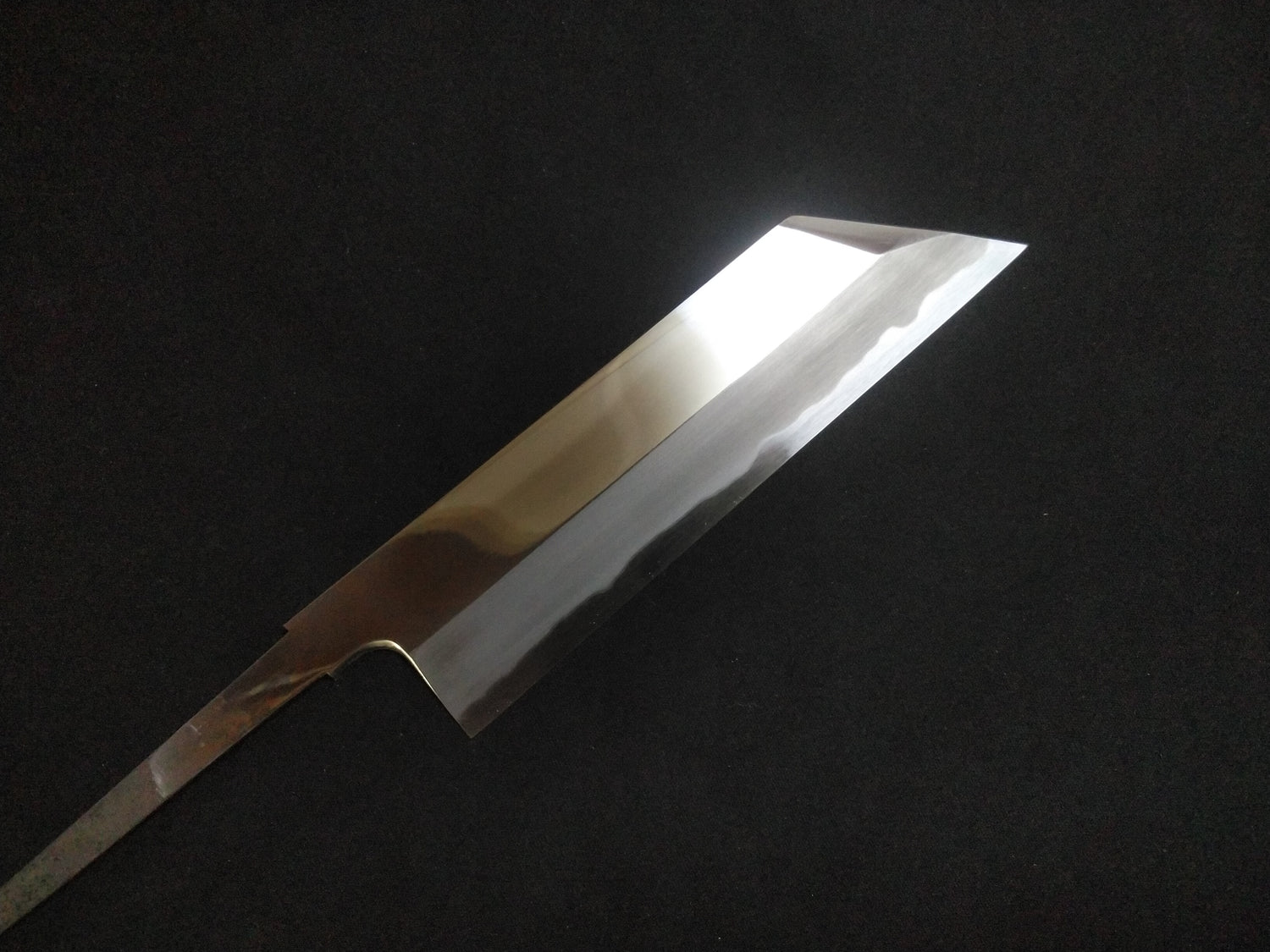
Japanese and Western knives
-
Discover the unique traits of Japanese and Western knives. Japanese knives excel in fish and vegetable preparation, rooted in ancient tradition, while Western knives offer versatility across various culinary tasks.
-
Features of Japanese and Western Knives
-

-
What is a Japanese Knife?
Japanese kitchen knives have been used in Japan since ancient times and have evolved uniquely along with the Japanese food culture. They specialize in cooking fish and vegetables, and a wide variety of types are made to suit different ingredients. A knife that has its roots in Japanese swords and is made by joining pots and soft iron, and is often used mainly in Japanese cooking. Basically, it is called a single-edged knife, meaning that only one side of the blade is made of steel. The handle is an insert type and can be replaced when the handle becomes rotten, which is one of the features of Japanese kitchen knives. Typical examples are Yanagiba and Usuba..
-
What is a Western Kitchen Knife?
Western kitchen knives were introduced from the West after the Meiji period (1868-1912), where meat-eating was the main diet. Although some of them are used for special purposes, most of them can be used for a wide range of foods such as meat, fish, and vegetables, and are not as limited in their uses as Japanese kitchen knives.
There are fewer types of knives than Japanese knives, and the typical Gyuto can cut almost any kind of food with a single knife. Most of them are double-edged.
Santoku kitchen knives, which are widely used in Japanese households today, are one of the Western kitchen knives, but they originated in Japan as a fusion of Gyuto (beef knife) and Japanese kitchen knives. Some Western kitchen knives have evolved into Japanese kitchen knives.
Difference between Japanese and Western Kitchen Knives
-

-
Single-Edged or Double-Edged?
One of the most common differences between Japanese and Western kitchen knives is the difference in blade structure. The basic structure of Japanese kitchen knives is a single-edged blade with a blade on only one side, which is attractive for its good separation from the food and beautiful cutting edge without crushing the cross-section. For this reason, Japanese knives are now widely used mainly by professionals in the field of Japanese food preparation, where delicate cooking is required.
On the other hand, Western kitchen knives are basically double-edged. While single-edged knives have a beautiful cross-section, they have the disadvantage of making it difficult to cut straight. However, Western kitchen knives have blades on both sides, so they are easy to handle with balanced force.
Although Japanese kitchen knives are single-edged and Western kitchen knives are double-edged, there are also double-edged Japanese kitchen knives such as rape-cutting knives. There are also double-edged kitchen knives that are generally classified as Western kitchen knives, such as Japanese Santoku knife, Japanese Gyuto knife, and Japanese Petit knife, which are also classified as Japanese kitchen knives. -
Difference in Handle
Another difference between Japanese and Western kitchen knives is the way the handle is fixed. Japanese kitchen knives have a handle that holds the base of the blade (the core), and the handle is usually interchangeable.
On the other hand, Western kitchen knives sandwich the core of the blade between the handle and the handle and fasten it with rivets. -
Western Kitchen Knives of Disposable Culture/ Japanese Kitchen Knives of Sharpening Culture
In looking at the characteristics of Japanese knives and comparing them to Western knives, we can see a definite difference depending on the cooking method.
Western-style knives have the characteristic of being double-edged, which means that they need to be sturdy so that they can efficiently pound through meat. Since many dishes are made by stewing meat, the cut of meat does not need to be delicate. The role of the Western knife was to cut meat with gusto, even meat with bones. If the blade spilled, it was a consumable item to be used and discarded.
Japanese knives need to be sharp enough to suit the delicate Japanese cuisine. Japanese kitchen knives are characterized by their ability to cut without crushing the cells of the food and to reveal a beautifully cut surface. The Japanese are very sensitive to the taste of sashimi cut with a sharp knife and the smoothness of the texture.
Many Japanese knives have a single-edged blade, which is suitable for producing a beautiful cross-section of the material. To maintain their sharpness, regular maintenance is essential.
The act of caring for a single kitchen knife like a sword and sharpening it to maintain its sharpness is a characteristic of Japanese kitchen knives.

Japanese Knife Structure
Our guide provides insights into the unique features and benefits of each type to help you make an informed choice based on your cooking needs. Learn about the specific structures and uses of single-edged knives known for their precision, and double-edged knives that offer versatility.

How to Cut Evenly with a Single-Edged Blade That Tends to Deviate
To cut evenly with a single-edged blade, which naturally tends to veer, applying pressure with your thumb on the blade's back and adjusting your perspective to focus on the blade's right side can significantly help. These techniques, mastered through practice, are especially useful for professional chefs.

Experience the sharpness trusted by 98% of Japan’s top chefs — handcrafted in Sakai City.
Through our exclusive partnership with Shiroyama Knife Workshop, we deliver exceptional Sakai knives worldwide. Each knife comes with free Honbazuke sharpening and a hand-crafted magnolia saya, with optional after-sales services for lasting confidence.
KIREAJI's Three Promises to You
-

1. Forged in the Legacy of Sakai
In the hands of master artisans, each blade is born from over six centuries of Japanese knife-making heritage. Perfectly balanced, enduringly sharp, and exquisitely crafted—every cut carries the soul of true craftsmanship.
-

2. Thoughtful Care for Everyday Use
Each knife comes with a hand-fitted wooden saya for safe storage. Upon request, we provide a complimentary Honbazuke—the traditional final sharpening—so you can enjoy effortless performance from day one.
-

3. A Partnership for a Lifetime
A KIREAJI knife is more than a tool—it is a lifelong companion. Through our bespoke paid aftercare services, we preserve its edge and grace, so it remains as precise and dependable as the day it first met your hand.





